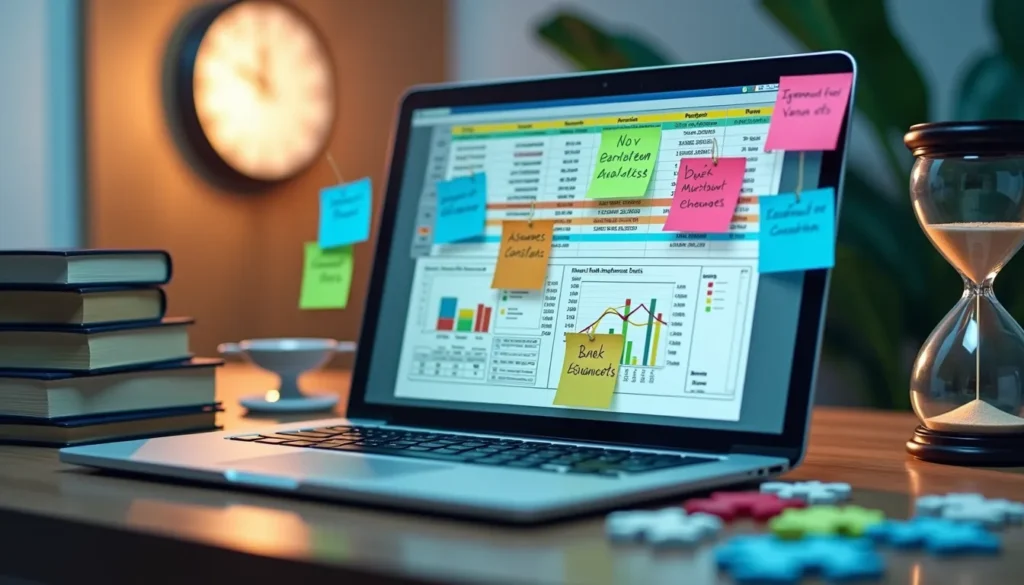Master Your Overhead Cost Management This 2025

Managing your overhead costs is key to running a successful business. It helps you know how much money you need just to keep the lights on. With the right tools, you can easily track and calculate these costs. This article will guide you on how to handle overhead cost management effectively.
Key Takeaways
- Overhead costs are the expenses to run your business that are not directly tied to a product or service.
- There are three main types of overhead: fixed, variable, and semi-variable.
- Knowing your overhead costs helps you set better prices and make more profit.
- Tools like MyOverhead can simplify the tracking and calculation of your overhead costs.
- Regularly updating your costs will keep your business running smoothly.
- Explore ways to optimize your expenses for better financial health.

What Are Overhead Costs?
Overhead costs are the expenses that you have to pay just to keep your business running. These costs are not linked directly to making a product or offering a service. Think of them as necessary expenses. They include things like rent, utilities, and salaries for employees who do not directly produce goods.
Types of Overhead Costs
There are three main types of overhead costs:
- Fixed Overhead: These costs do not change. You pay the same amount no matter how much you sell. Examples include rent and salaries.
- Variable Overhead: These costs change based on how much you produce or sell. If you sell more, you spend more. Examples include costs for supplies and utilities that rise with production.
- Semi-variable Overhead: These costs have a fixed part and a variable part. For instance, a phone bill has a base rate and extra charges for more usage.
Examples of Overhead Costs
Here are some common examples of overhead costs:
- Rent for your business space
- Utility bills like electricity and water
- Insurance for your business
- Salaries for administrative staff
- Office supplies and equipment
Additional Overhead Costs:
| Type of Cost | Examples | Typical Range |
|---|---|---|
| Marketing Expenses | Online Ads, Print Ads | $100 – $5,000+ monthly |
| Maintenance Fees | Equipment repairs | $50 – $500 per month |
| Professional Services | Accounting, Consulting | $200 – $2,000 monthly |
Understanding these costs helps you see how they can impact your profits.

Why Is Overhead Cost Management Important?
Knowing your overhead costs is crucial for several reasons. First, it helps you figure out how much you need to charge for your products or services. If you do not account for these costs, you might end up losing money.
Second, managing overhead costs helps you spot areas where you can save money. If you see that some costs are too high, you can explore ways to reduce them. This can lead to more profit.
How to Calculate Overhead Costs
Calculating your overhead costs can seem tricky, but it doesn’t have to be. Here are the steps to follow:
- List Your Costs: Write down all your overhead costs. Group them into fixed, variable, and semi-variable categories.
- Add Up the Costs: Sum up the costs in each category. This gives you a clear picture of your total overhead.
- Determine Your Overhead Rate: Divide your total overhead by your estimated sales. This rate helps you see how much of your sales go to cover overhead.
The Role of Software in Overhead Cost Management
Using software can make managing overhead costs much easier. Tools like MyOverhead allow you to enter your costs and automatically calculate your overhead rates. You don’t need to be a math whiz to use them. The software does the hard work for you.
Features of MyOverhead
- User-Friendly Interface: It is designed for anyone to use. You can enter data quickly.
- Cost Tracking: Keep track of your costs in real-time, so you know where your money goes.
- Reporting: Get instant reports on your overhead rates and other important numbers. This helps you make informed decisions.
Additional Strategies to Cut Overhead Costs:
- Negotiate better terms with suppliers.
- Utilize energy-efficient practices to reduce utility costs.
- Consider remote work options to save on office space.
Tips for Effective Overhead Cost Management
To manage overhead costs well, consider these tips:
Regularly Review Costs
Make it a habit to check your overhead costs every few months. This helps you spot any changes and adjust your business plan.
Set a Budget
Create a budget for your overhead costs. Stick to it as much as possible. A budget keeps your spending in check.
Cut Unnecessary Expenses
Look for costs that can be reduced or eliminated. For instance, can you find a cheaper supplier for your office supplies? Small savings add up.
Use Technology
Take advantage of software tools like MyOverhead to automate your overhead cost calculations. This will save you time and reduce mistakes.

Keeping Your Data Current
Keeping your costs updated is essential for accurate tracking. As your business changes, so do your costs. Here’s how to keep your data fresh:
- Update Regularly: Whenever you have a change in costs, like a new employee or a rent increase, enter that information right away.
- Review Annually: At the end of the year, review all your overhead costs to ensure everything is accurate.
Understanding Break-Even Costs
Knowing your break-even costs is key to staying profitable. The break-even point is how much you need to sell to cover all your costs. Here’s how to calculate it:
- Calculate Total Fixed Costs: Find your total fixed overhead costs.
- Determine Contribution Margin: This is the price you sell for minus the variable cost of making that product.
- Calculate Break-Even Point: Divide your total fixed costs by your contribution margin. This gives you the number of sales you need to break even.
Understanding this helps you set sales goals and pricing strategies.
The Importance of Accurate Pricing
When you know your overhead and break-even costs, you can set your prices correctly. If your prices are too low, you might not cover your costs. This can lead to losses.
Example: If it costs you 50 dollars to produce a product (including overhead), you should charge more than 50 dollars to make a profit.

Using Overhead Costs to Set Goals
Overhead costs can help you set business goals. Knowing your expenses allows you to plan for growth. You can decide how much to invest in marketing or new products based on your overhead costs.
Additional Insights on Setting Pricing Strategies:
| Pricing Strategy | Description | Benefits |
|---|---|---|
| Cost-Plus Pricing | Adding a markup to your costs | Simple and straightforward |
| Value-Based Pricing | Pricing based on perceived value | Can yield higher profit margins |
| Competitive Pricing | Setting prices based on competitors | Helps you stay relevant in the market |
Summary of Overhead Cost Management
Managing overhead costs is about understanding what you spend to keep your business running. This includes fixed, variable, and semi-variable costs. By tracking these costs, you can set better prices and improve your profit margins.
Tools like MyOverhead make it easier to calculate and manage these costs. With the right software, you can stay on top of your expenses and make smart decisions.
Final Thoughts
Overhead cost management is essential for any business. By knowing your costs, you can improve your pricing strategy and increase profits. Regularly updating your overhead costs and using tools like MyOverhead can make this task much easier.
Take charge of your business finances today. Start calculating your overhead costs accurately. With the right knowledge and tools, you can set your business up for success.
Remember, every dollar counts. Understanding your overhead costs will help you make better decisions. So do not wait. Make managing your overhead costs a priority today.

Leave a Reply